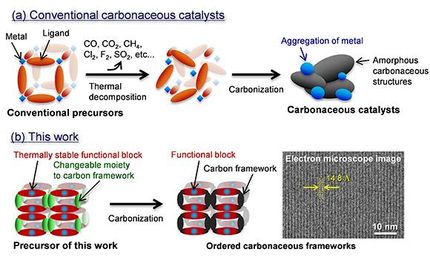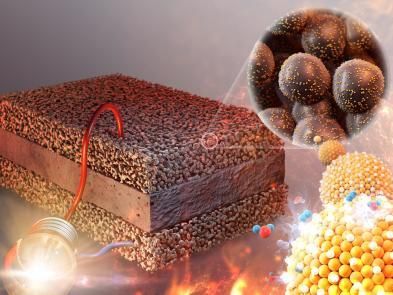Experiments Reveal Unexpected Activity of Fuel Cell Catalysts
Advertisement
Researchers at the U.S. Department of Energy's Brookhaven National Laboratory have unveiled important details about a class of catalysts that could help improve the performance of fuel cells. With the goal of producing "clean" hydrogen for fuel cell reactions in mind, the researchers determined why two next-generation catalysts including gold, cerium, titanium, and oxygen nanomaterials exhibit very high activity. Their results are published in Science.
A major problem facing fuel cell technology is that the hydrogen-rich materials feeding the reaction often contain carbon monoxide (CO), which is formed during hydrogen production. Within a fuel cell, CO "poisons" the expensive platinum-based catalysts that convert hydrogen into electricity, deteriorating their efficiency over time and requiring their replacement.
"Fuel cell reactions are very demanding processes that require very pure hydrogen," said Brookhaven chemist Jose Rodriguez. "You need to find some way to eliminate the impurities, and that's where the water-gas shift reaction comes into play."
The "water-gas shift" (WGS) reaction combines CO with water to produce additional hydrogen gas and carbon dioxide. With the assistance of proper catalysts, this process can convert nearly 100 percent of the CO into carbon dioxide. Rodriguez's group, which includes researchers from Brookhaven's chemistry department, the Center for Functional Nanomaterials (CFN), and the Central University of Venezuela, studied two "next-generation" WGS nanoscale catalysts: gold-cerium oxide and gold-titanium oxide.
"These nanomaterials have recently been reported as very efficient catalysts for the WGS reaction," said Brookhaven chemist Jan Hrbek. "This was a surprising finding because neither bulk gold nor bulk ceria and titania are active as catalysts."
To determine how these nanocatalysts work, the research team developed so-called "inverse model catalysts." The WGS catalysts usually consist of gold nanoparticles dispersed on a ceria or titania surface - a small amount of the expensive metal placed on the cheap oxide. But to get a better look at the surface interactions, the researchers placed ceria or titania nanoparticles on a pure gold surface.
"For the first time, we established that although pure gold is inert for the WGS reaction, if you put a small amount of ceria or titanium on it, it becomes extremely active," Rodriguez said. "So although these inverse catalysts are just models, they have catalytic activity comparable to, and sometimes better than, the real deal."
Using a technique called x-ray photoelectron spectroscopy at Brookhaven's National Synchrotron Light Source, as well as scanning tunneling microscopy and calculations, the researchers discovered that the catalysts' oxides are the reason for their high activity.
"The oxides have unique properties on the nanoscale and are able to break apart water molecules, which is the most difficult part of the WGS reaction," Hrbek said. Added Brookhaven physicist Ping Liu: "After you dissociate the water, the reaction continues on to eliminate CO. But if you don't have nanosized oxide particles, none of this will work."
The researchers plan to continue their study of these catalysts at the NSLS and CFN in order to further explore the reaction mechanism and optimize its performance. Funding for this research was provided by the Office of Basic Energy Sciences, within the U.S. Department of Energy's Office of Science.
































































